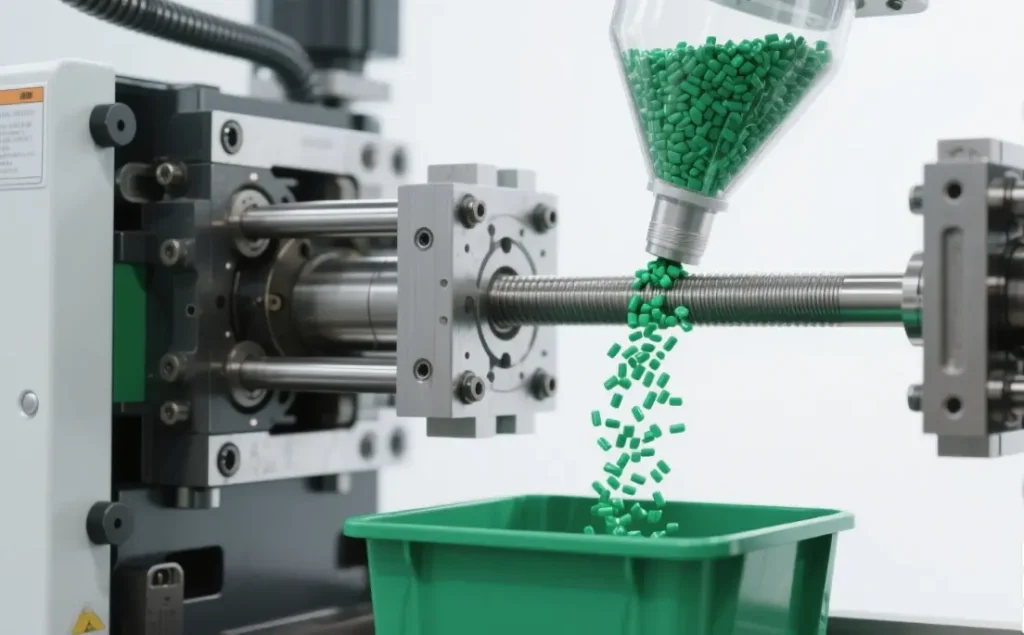Injection molding phone case production is one of the most widely used methods for creating durable, stylish, and cost-effective smartphone protection.
Smartphones play a central role in our daily lives — helping us connect, work, and stay entertained.
Because they are both valuable and fragile, protecting them with a quality phone case has become a must.
One of the most common production methods behind today’s reliable and attractive phone cases is plastic injection molding.
In this article, we’ll walk through how an injection molding phone case is made, from design to final touches, and explore the materials that make each case strong, sleek, and functional.

What Is Plastic Injection Molding?
Plastic injection molding is a manufacturing process used to produce a wide range of plastic parts — including phone cases — in large quantities.
The process involves heating plastic until it melts, then injecting it into a mold cavity under high pressure.
Once the plastic cools and hardens, it takes the exact shape of the mold.
This method is ideal for making high-precision components like phone cases, where exact dimensions and consistent quality are essential.
The Phone Case Molding Process Step by Step
Designing the Mold
Everything begins with the design.
Engineers create a detailed blueprint of the case, considering cutouts for buttons, ports, and the camera.
These blueprints are then used to build a mold made of steel or aluminum — the core tool in phone case molding.
CNC Machining the Mold
Engineers shape the mold using CNC (Computer Numerical Control) machining once the design is complete.
CNC machines carve out the mold with extreme precision, ensuring the phone case will fit the device perfectly.
This step is essential in large-scale plastic phone case making, where accuracy and repeatability are crucial.
Injecting the Plastic
The next step involves melting plastic materials — like TPU, polycarbonate, or polypropylene — and injecting them into the mold under high pressure.
The machine cools the mold so the plastic hardens into the final shape.
This step is the heart of the injection molding phone case process and allows manufacturers to produce thousands of cases quickly and with minimal variation.
Removing and Finishing the Case
The operator carefully removes the case from the mold after formation.
At this stage, there may be rough edges or surface imperfections.
The case goes through trimming, smoothing, and polishing to meet quality standards.
Some cases also receive texturing, coatings, or color treatments during finishing.
Common Materials Used in Plastic Phone Case Making
The material used in a phone case determines its strength, flexibility, and appearance.
The most popular options include:
TPU (Thermoplastic Polyurethane): Highly flexible and durable, TPU phone case production is known for excellent shock resistance and comfort.
It’s a favorite for protective phone cases due to its rubber-like feel and long lifespan.
Polycarbonate (PC): This hard plastic offers top-tier impact resistance, perfect for tough, heavy-duty cases.
Polypropylene (PP): Lightweight and resistant to wear, PP is often used when a slim, simple case is needed.
Polyurethane (PU): Offers a range of hardness levels and is often used in combination with other materials for custom designs.
These plastics can be blended or enhanced with other additives to improve grip, style, or environmental sustainability.
Why Injection Molding Is Ideal for Phone Case Production
Injection molding phone case production has become standard in the industry for several key reasons:
High Precision
Injection molding allows for the creation of detailed and complex case shapes with tight tolerances — ideal for modern smartphones.
Mass Production Capability
With this method, manufacturers can produce large volumes of cases quickly and efficiently, making it perfect for meeting global demand.
Material Flexibility
The process supports a wide range of plastics, including those used in TPU phone case production, which means different designs, colors, and features can be achieved.
Cost-Effective Manufacturing
Although creating a mold involves upfront investment, the cost per unit becomes very low in mass production, making plastic phone case making highly economical.
At C&T, we specialize in high-volume injection molding phone case manufacturing and have over a decade of experience in the industry.
As a professional phone case factory, we offer customized solutions tailored to your brand and market needs.
Clients from across the globe trust us for our quality, flexibility, and fast delivery.
Explore our wide range of customizable phone cases at ctcase — and feel free to contact us for a competitive quote.
Conclusion
Behind every sleek and protective phone case is a well-engineered process.
Through phone case molding using injection technology, manufacturers can deliver products that balance design, durability, and affordability.
Whether it’s a soft TPU grip case or a hard-shell polycarbonate option, injection molding phone case production ensures high standards and consistent quality for every user.
People understand how manufacturers make these cases, which not only shows the value of modern manufacturing but also helps them appreciate the technology protecting the devices we rely on every day.





